Homemade Pasta is beautiful thing.
Making homemade pasta from scratch is easier than you might think. We’re going to show you the food processor method, but we’ll also review other methods as well. This pasta only has a handful of ingredients and comes together in about 30 minutes!
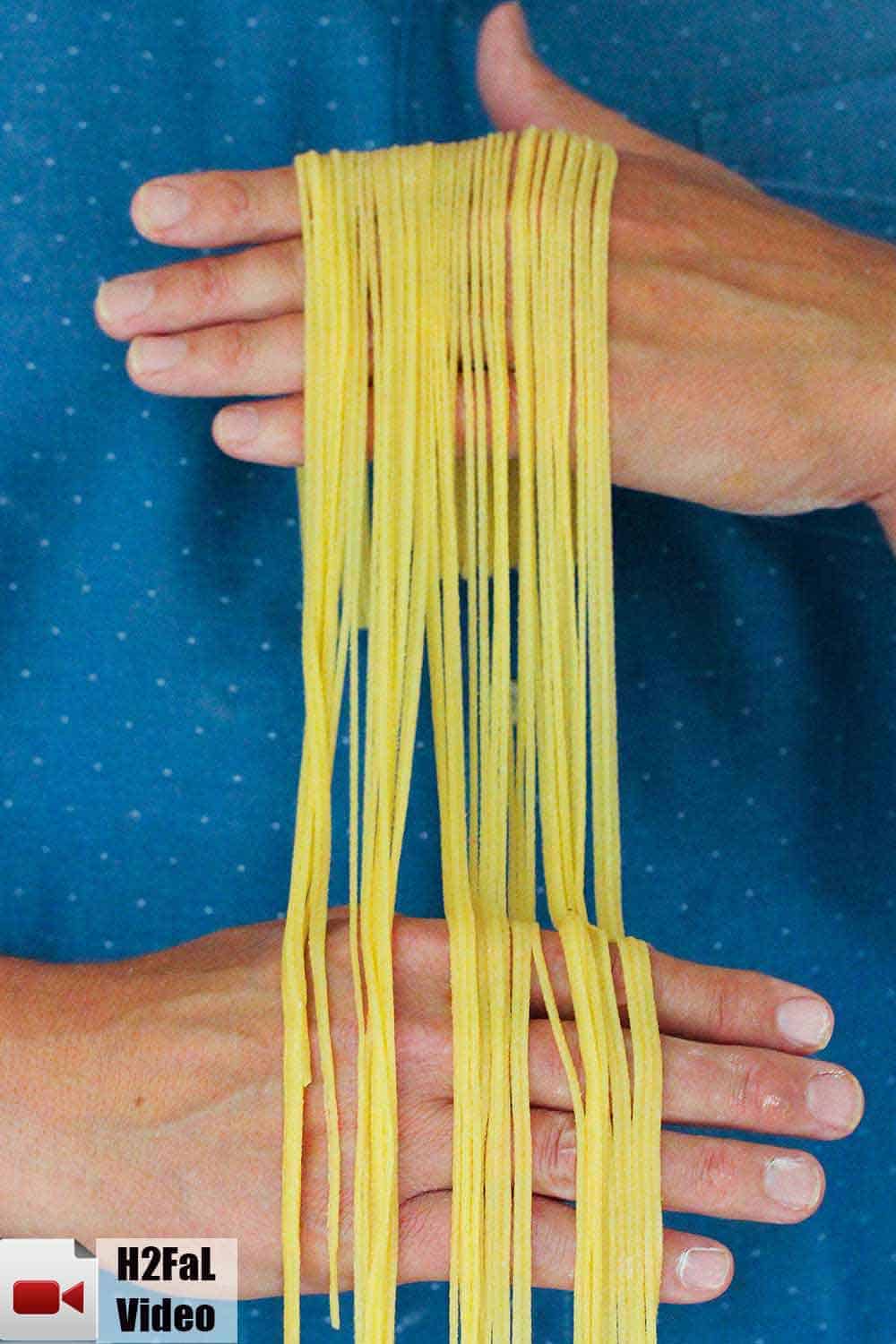
HOW TO MAKE HOMEMADE PASTA
Making pasta from scratch at home is easier than you might think.
We use our food processor and then a couple of pasta attachments on our KitchenAid stand mixer to make the pasta-making fast.
Watch us show you how to make pasta from scratch at home!
WHAT YOU NEED TO MAKE THE BEST HOMEMADE PASTA
The beauty of pasta is in its simplicity. Only a handful of ingredients come together to make one our most beloved foods ever created.
The history of pasta is a bit muddled, but one thing is certain, life without pasta almost wouldn’t be worth living!
All you need to make pasta is flour, a bit of salt, eggs, oil and water. That’s it!
EXPERT TIP: We love using semolina flour when making homemade pasta. It consists of 12 to 13% protein and has a low elasticity than other flour used for pasta. This is ideal for making pasta at home. It helps the pasta retain its shape and the texture and taste is what you want in fresh pasta. It’s also ideal when making homemade pizza dough.
We combine the semolina with a little all-purpose flour and salt. And then gently pulse in 2 eggs, olive oil, and then water. Usually 2 tablespoon oil and 3 tablespoon of water.
HOW TO PREPARE PASTA DOUGH FOR ROLLING
After a ball has formed in the base of your food processor, feel the pasta. It should be sticky to the touch, but not wet, but also not dry. If the dough feels dry, add a little more water and pulse again until fully incorporated.
Remove the dough from the food processor and form it into a ball with your hands. Take a large, sharp knife, and cut the sphere into 4 pieces.
Wrap the 4 pieces in plastic wrap and let sit for 15 to 30 minutes.
ROLLING OUT HOMEMADE SEMOLINA PASTA
Now, it’s time to start rolling out pasta! Take one of the pieces and remove the plastic wrap.
Use the palm of your hand to flatten the ball into approximately a 2×4-inch rectangle. It should be about ⅛-inch thick.
Turn the left side in towards the middle, and then do the same for the right side. As if you are folding a letter to go into an envelope.
EXPERT TIP: Use a rolling pin to help you flatten the dough, both before folding and then again after folding, back down to about ⅛-inch in thickness.
KNEADING THE PASTA DOUGH
It’s now time to knead the pasta dough. This can be done with two hands and a rolling pin, but a hand-cranked pasta maker or a pasta sheet attachment to a stand-mixer makes this process much simpler.
Place your pasta attachment on its widest setting. In most cases, this is either a ‘0’ or a ‘1’ on the dial located on the pasta roller.
Either start cranking the pasta machine, or turn your mixer on medium speed, and gently start feeding the folded pasta through the roller.
EXPERT TIP: Don’t worry if the pasta starts to shred, or come a part at this point. Simply press it back together into a rectangle, fold in the sides again, and roll through again on the widest setting. Repeat this 3 to 4 times until the pasta sheet is smooth. Each time you place the folded pasta back into the roller, turn it 90°. This will help reduce jagged edges on the pasta.
Once you have finished kneading the pasta, by putting it through the roller on the widest setting, change the setting to the next tightest level, usually on “1” or “2.” Put the pasta through again, helping it through with your hands as it rolls out. Continue tightening the setting to the desired thickness for the pasta and continue feeding the dough through. We recommend not exceeding a setting of “3” or “4” for cut pasta such as spaghetti or linguine. For lasagna pasta, if you desire thin sheets, then go as low as a “1” or “2” setting.
HOW TO MAKE PASTA WITHOUT A FOOD PROCESSOR
This technique is not too difficult, and is how it’s done traditionally. Simply place the flour on your work space and using your fingers, form a well in the center of the flour.
Add the eggs, oil, water and salt in the middle, and then use a wooden spoon to gently begin incorporating the flour into the wet ingredients. Once a dough starts to form, use your hands to knead the dough until smooth and elastic, about 15 to 20 minutes. At this point, you are ready to begin the kneading and rolling portion of making homemade pasta.
If you are making cut pasta, such as spaghetti, angel hair, or linguine, you’ll need to remove the main pasta roller and add the appropriate pasta attachment. Place the pasta through the pasta cutter, again using your hands to catch the pasta as it is being cut.
HOW TO COOK FRESH PASTA
After the pasta has reached the desired thickness and is ready to be cooked, get a large baking sheet and sprinkle semolina flour all over the pan. Gently place the pasta on the pan and then cover with a kitchen towel.
Repeat the entire process with the other pieces of pasta until you have them all ready to go. Meanwhile, bring a large pot of heavily salted water to a boil.
Fresh pasta only takes about 2 minutes until it is perfectly cooked. Drain and use immediately, or place in a bowl and add a dash or two of olive oil to prevent the pasta from sticking together. Or dry (see FAQs for more on this).
HOMEMADE PASTA FAQs
- What if I can’t find semolina flour? You can use all-purpose flour instead. We find that flour labelled as “00” is great for making pasta and pizza dough, but regular flour will work, too.
- Can I roll out the pasta without a pasta roller? Yes, you can, by using your hands for kneading and a rolling pin (or bottle) for rolling the dough. It takes practice to know once the dough as reached the right consistency and transform from flour, eggs and oil, to pasta dough. If you are really excited about making homemade pasta, we encourage you to look into purchasing a pasta machine or pasta attachments for your stand-mixer.
- Can I dry fresh pasta? Yes! We recommend placing the pasta on a pasta rack, or just a large baking sheet in a dry, non-humid area of your home. After about 24 hours, it will be dry. You can store the dried pasta in large zipper bags at room temperature. Some of the pasta may break a little after drying, but that’s okay, it will still cook perfectly. Dried pasta will keep for up to 6 months. You’ll need to cook dried pasta for 4 to 6 minutes.
- Can I freeze homemade pasta? Yes! Place the baking sheet with the cut pasta on it in your freezer for about 10 minutes (this keeps the dough from sticking together). Then, transfer to a large zipper bag and place back in the freezer for up to 3 months. Cook, frozen, for about 3 to 5 minutes.
- What are the best dishes to serve with fresh pasta? We honestly think good-quality, commercially dried pasta works better on heavier dishes such as Spaghetti and Meatballs. But we LOVE using homemade pasta on our Fresh Fettuccine with Creamy Sausage Sauce, Spaghetti with Pesto, Pasta Pomodoro, or even just tossed with a little olive oil, salt, pepper and grated parmesan cheese. We also love making Homemade Fresh Spinach Pasta!
In the meantime, let’s make an amazing batch of Homemade Pasta!
Ready to make fresh semolina pasta at home? You can do it!! Go for it! We find it delicious, but also therapeutic when transforming these simple ingredients into gorgeous pasta!
And when you make it, be sure to take a picture, post on Instagram, and tag @howtofeedaloon and #howtofeedaloon!
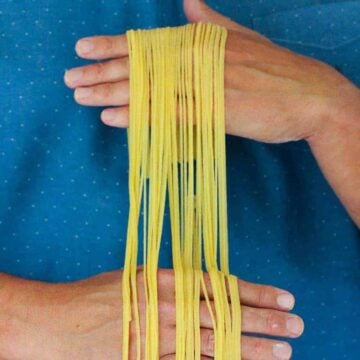
Homemade Pasta
Video
Equipment
- Food processor, or hands and a rolling pin (see post for more)
- Pasta roller attachments with stand mixer, or hand-cranked pasta roller
Ingredients
- 1 cup semolina flour
- ½ cup all-purpose flour
- ½ teaspoon salt
- 2 large eggs lightly beaten
- 2 tablespoon olive oil
- 2 to 3 tablespoon water
Instructions
- Using your food processor, mix together the flours and salt....pulsing a few times.
- Slowly add the eggs to the food processor.
- Slowly add the oil, and then water with the food processor on.
- Once the dough turns into a ball, stop the food processor.
- Flour your hands, and pull out the dough
- On a floured surface, roll the dough into a ball. With a knife, divide the dough into quarters and cover with plastic wrap. Let rest for 15 minutes.
- Take one dough quarter at a time, and on a floured surface, using a rolling pin, gently roll out the dough into about a 2-inch by 4-inch rectangle, about ⅛-inch thick.
- Fold the sides into each other, like folding a letter.
- Roll smooth again with a roller and then fold the sides in again. Flatten to ⅛-inch with roller.
- Place your pasta roller on the widest setting (0) or (1). Feed the folded pasta through. If the pasta shreds, press the dough back together and form into a rectangle again. Fold in sides, and put through roller again. Repeat this process 3 to 4 times, until pasta is smooth.
- Trim the egdes of the pasta to make a smooth sheet of pasta.
- Begin tightening the pasta settings.
- Continue putting the pasta though the roller until you've reached the 3 setting.
- If you want cut pasta, such as spaghetti, angel hair, linguine, or fettucine, replace the pasta roller with the desired pasta cutter attachment.
- Put the pasta through the roller, catching the pasta with your hands as it is fed through.
- Place the pasta on a large baking sheet, sprinkled with semolina. (this will keep the pasta from sticking to each other).
- Bring a pot of water to a boil, with about a tablespoon of Kosher salt.
- Once boiling, add the pasta.
- Cook, stirring, for about 2 to 3 minutes.
- Drain.
- Serve immediately, or dry for 24 hours before storing, or freeze. (See FAQs for more on this).
Notes
Nutrition
POST UPDATE: This recipe was originally published in March, 2014, but the recipe was tweaked (improved), new photography was taken, and fabulous new video was added in October, 2019.

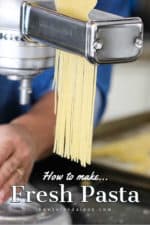
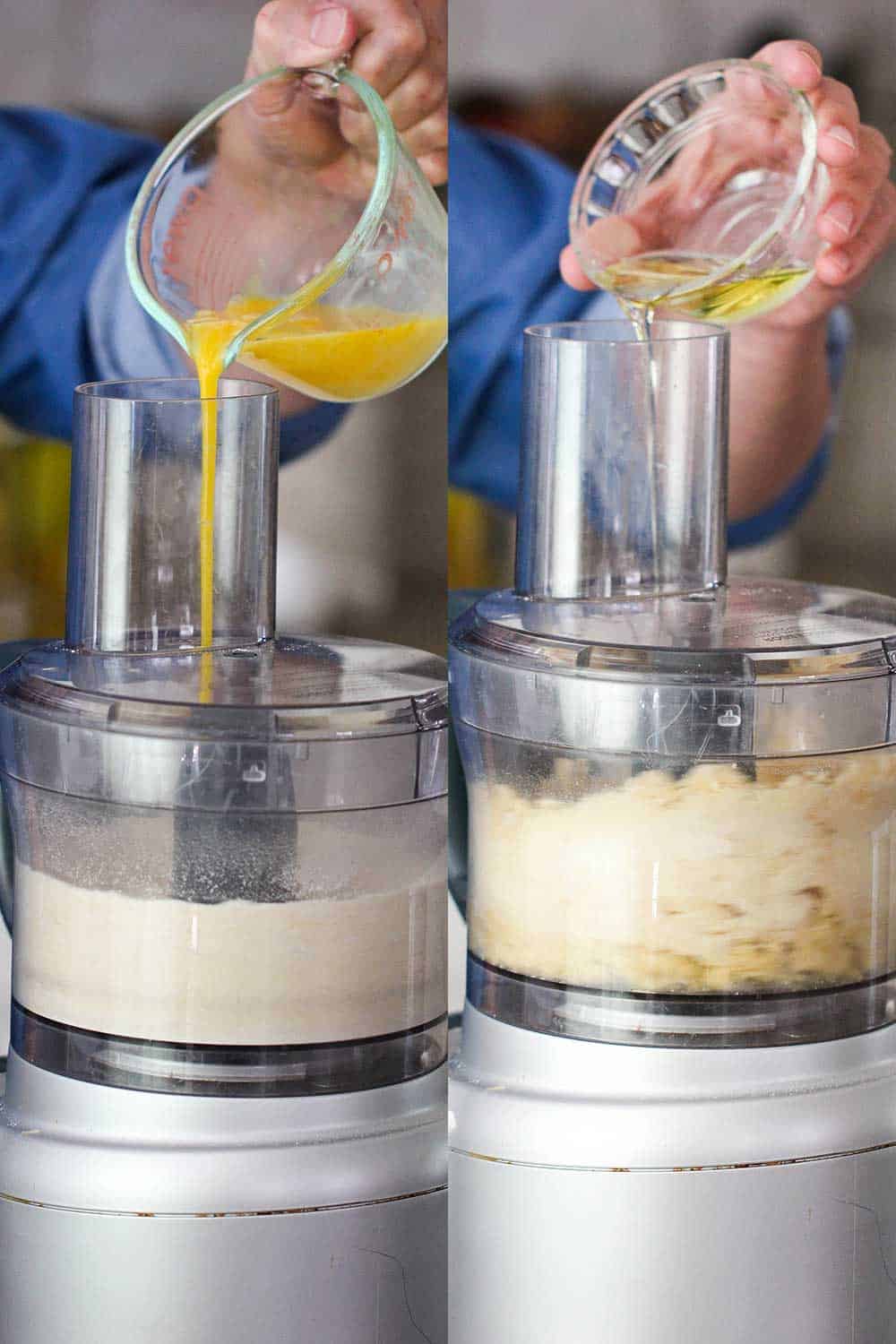
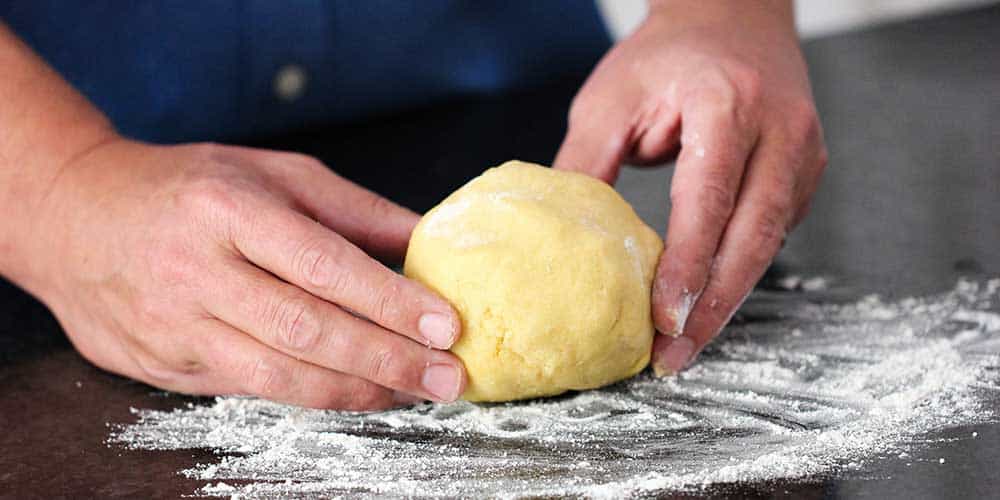
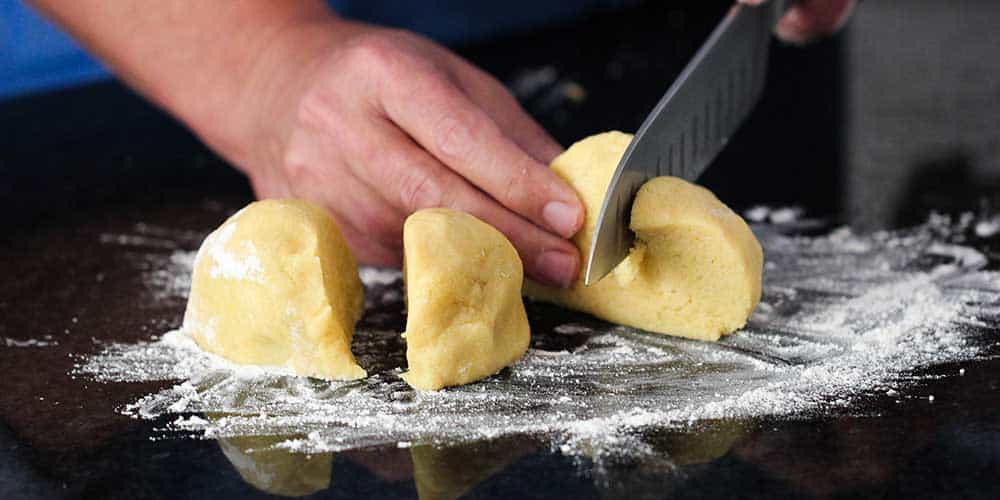
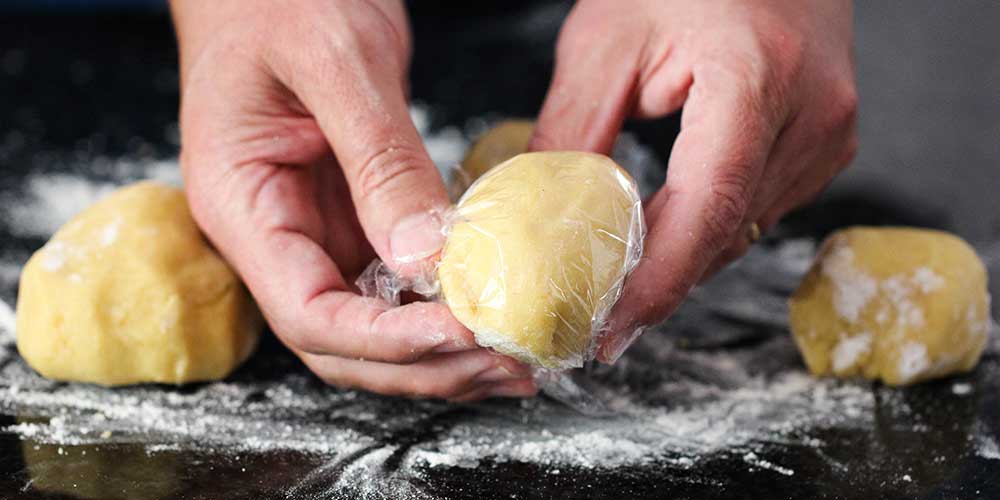

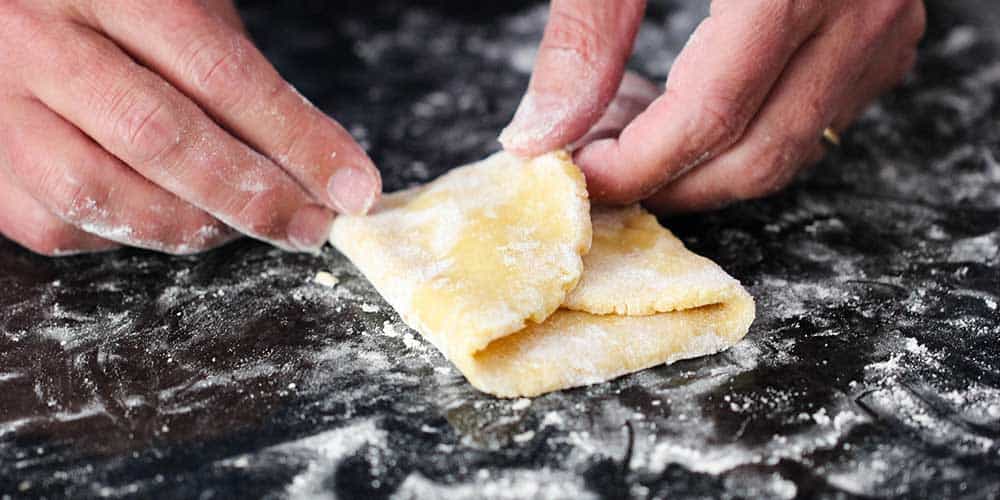
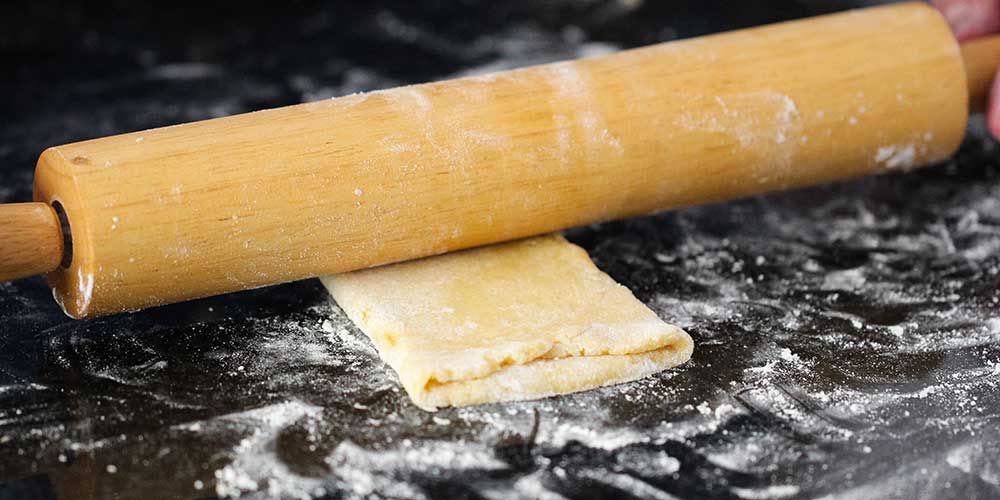
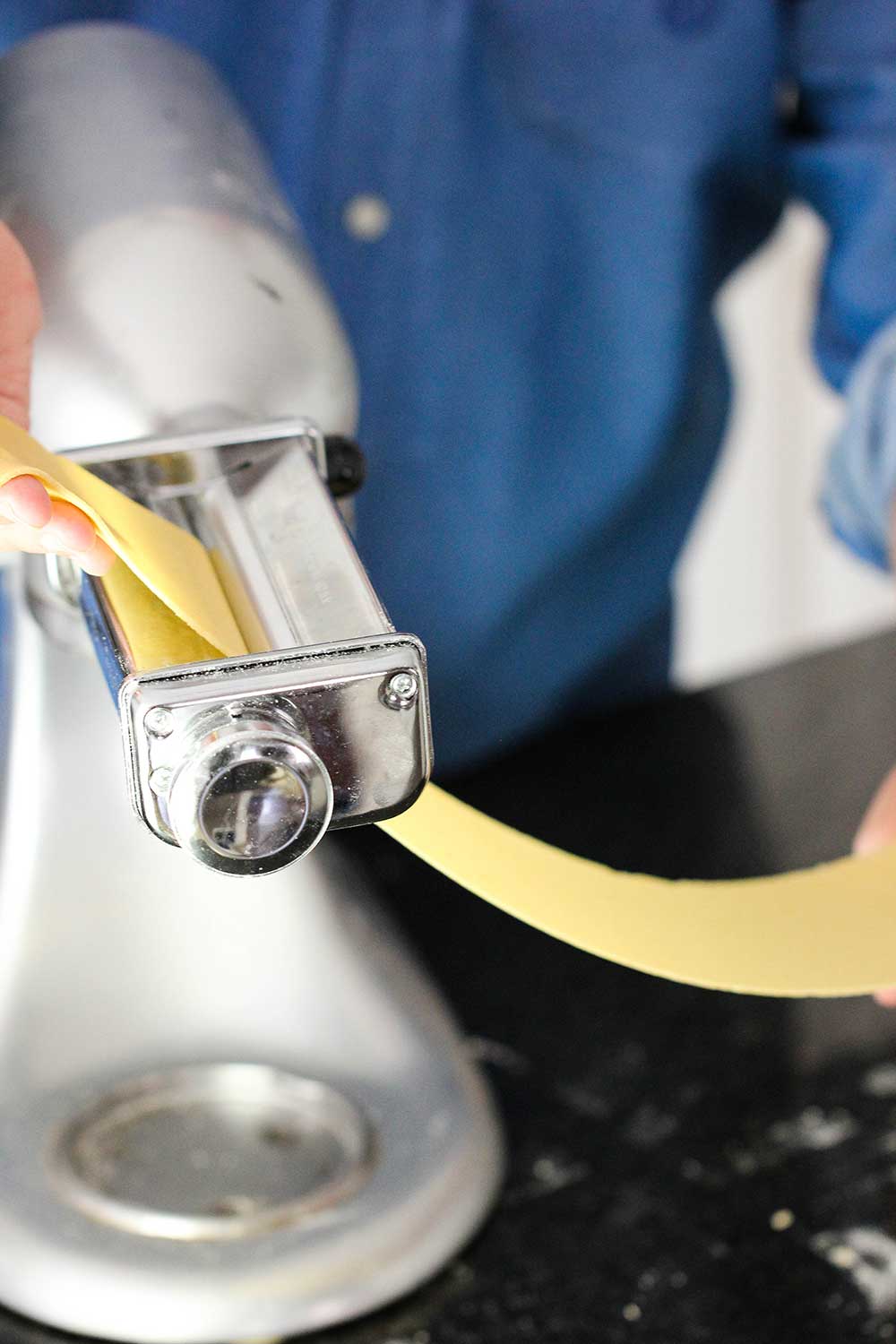
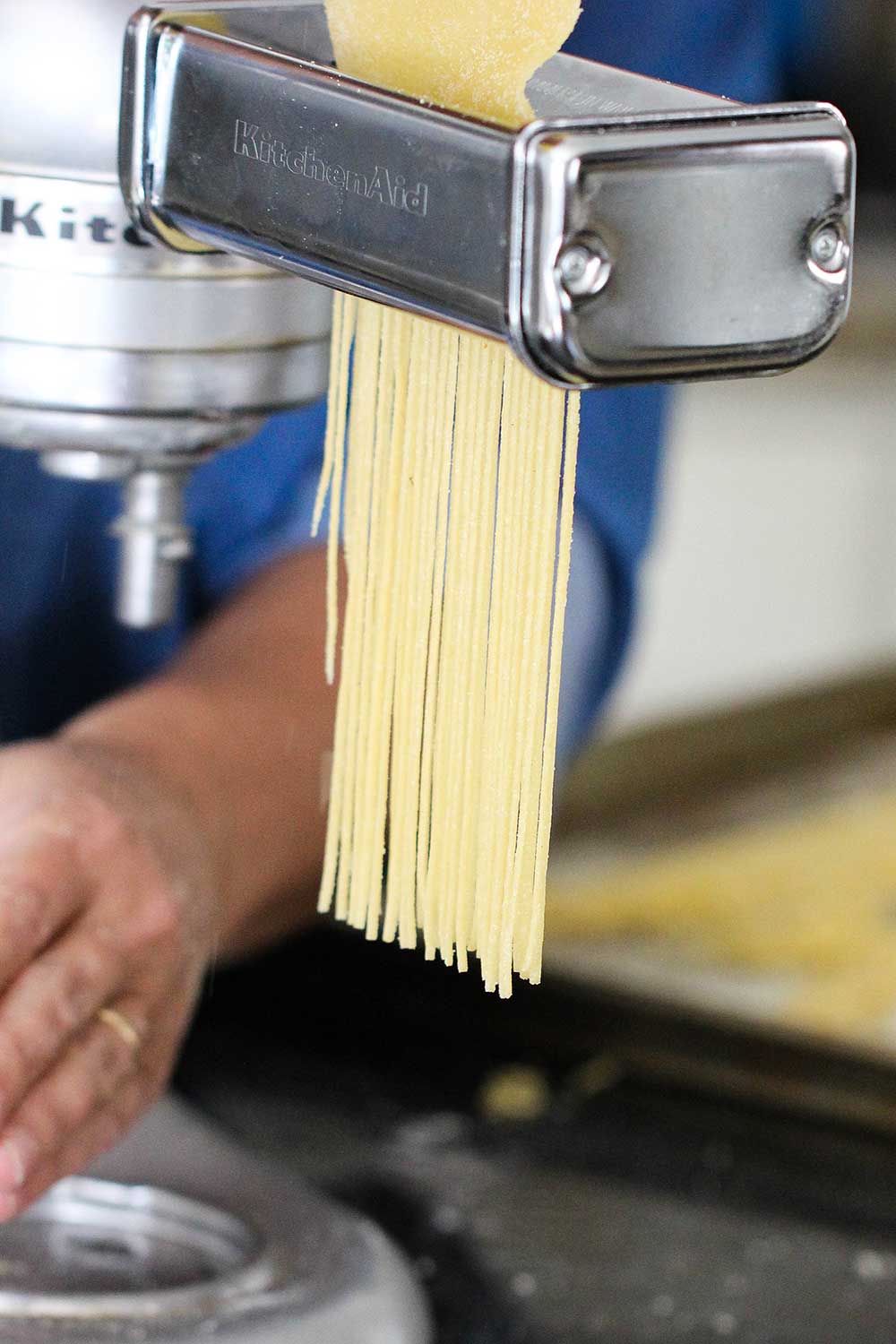
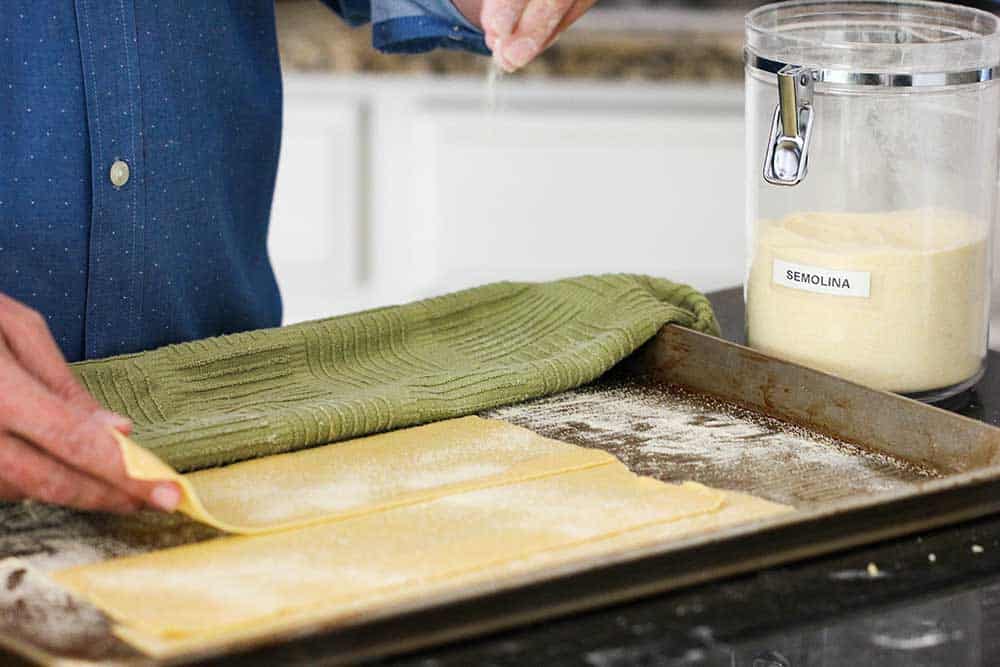

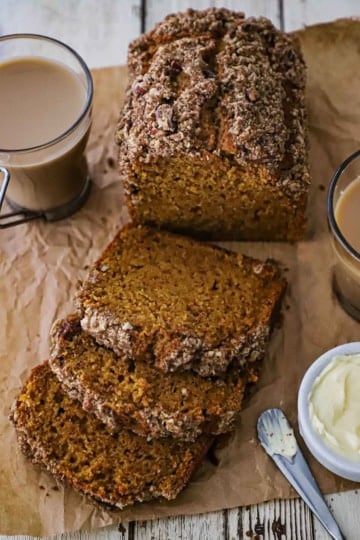


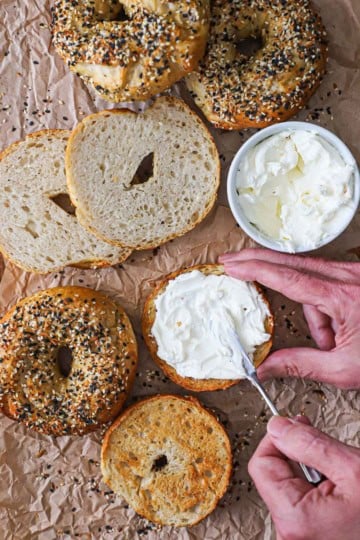
Diane says
This was a super easy way to make the dough. I never get it right using my kitchen aid stand mixer or doing by hand. This was much easier. I found letting the dough sit for 30 minutes made it much easier to work the dough through the pasta attachment. I made two batches because one batch only made enough sheets to make two tins of ravioli. That’s how I saw the difference between 15 and 30 minutes. I was too antsy to get the second round of dough done. And I was more difficult. So I just wrapped it up and let it set for 15 minutes more. Perfection! I should have realized from watching the video that I’d get only 4 chunks of dough. (Although I missed you and loon making me laugh) I used semolina and 00 flour. Not sure that I saw much of any difference between the 00 and all purpose flour. All in all, a welcome surprise at the ease of making pasta dough. Thanks again for a super easy recipe that made me look like a way better cook than I am! I’m enjoying the membership site tremendously! Great idea to get the reminders of when it’s time to start recipes.
Zale says
Good article Min, please allow those of you who like to watch free movies can visit this page, no phishing, no hacking, guaranteed safe and free … HD BLURAY movie quality please visit https://www.oppoy29.xyz
SHERRY LYNN HILL says
That pasta is a work of art. I have the first attachment for my Kitchen Aid, but need to buy the actual pasta cutter attachment. I can’t wait to make fettucine alfredo, my favorite. Let’s see if I can find an alfredo recipe on your site. Thank you. You work so hard providing your fans with such great recipes. xxSherry
Kris Longwell says
Hi Sherry! Thank you so so much!! You know, we don’t have an Alfredo sauce on our site, but it’s time we do. We’ll get that onto the schedule immediately. And thanks so much for you continued support, we truly appreciate it so very much!! Best, Kris & Wesley